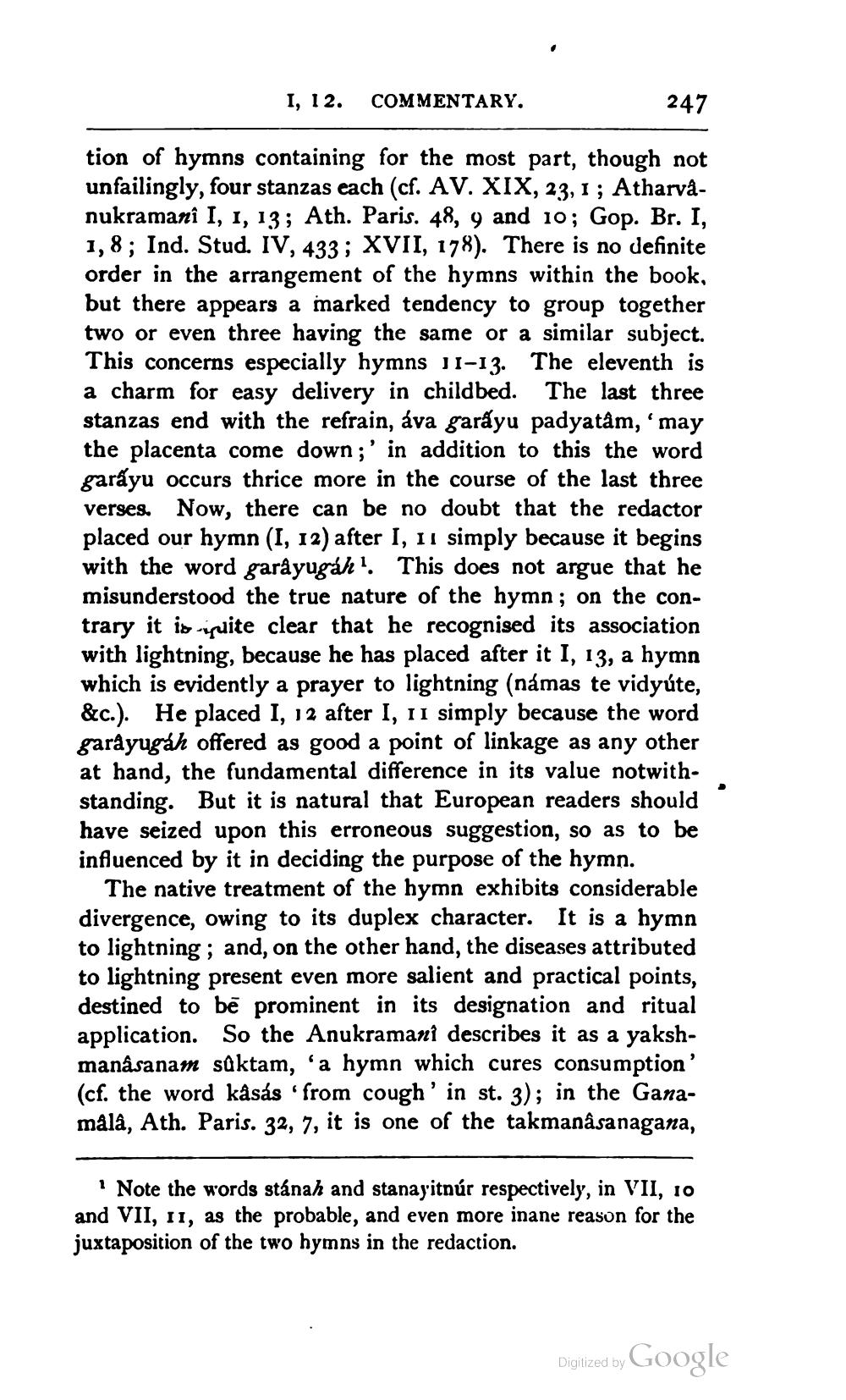________________
1, 12. COMMENTARY.
247
tion of hymns containing for the most part, though not unfailingly, four stanzas each (cf. AV. XIX, 23, 1 ; Atharvanukramani I, 1, 13; Ath. Paris. 48, 9 and 10; Gop. Br. I, 1,8; Ind. Stud. IV, 433; XVII, 178). There is no definite order in the arrangement of the hymns within the book, but there appears a marked tendency to group together two or even three having the same or a similar subject. This concerns especially hymns JI-13. The eleventh is a charm for easy delivery in childbed. The last three stanzas end with the refrain, áva garayu padyatâm, ‘may the placenta come down ;' in addition to this the word garáyu occurs thrice more in the course of the last three verses. Now, there can be no doubt that the redactor placed our hymn (I, 12) after I, 11 simply because it begins with the word garayugáh'. This does not argue that he misunderstood the true nature of the hymn; on the contrary it is quite clear that he recognised its association with lightning, because he has placed after it I, 13, a hymn which is evidently a prayer to lightning (námas te vidyúte, &c.). He placed I, 12 after I, 11 simply because the word garayugáh offered as good a point of linkage as any other at hand, the fundamental difference in its value notwithstanding. But it is natural that European readers should have seized upon this erroneous suggestion, so as to be influenced by it in deciding the purpose of the hymn.
The native treatment of the hymn exhibits considerable divergence, owing to its duplex character. It is a hymn to lightning; and, on the other hand, the diseases attributed to lightning present even more salient and practical points, destined to be prominent in its designation and ritual application. So the Anukramani describes it as a yakshmanâsanam suktam, 'a hymn which cures consumption' (cf. the word kasás from cough' in st. 3); in the Ganamâlâ, Ath. Paris. 32, 7, it is one of the takmanâsanagana,
· Note the words stánah and stanayitnúr respectively, in VII, 10 and VII, 11, as the probable, and even more inane reason for the juxtaposition of the two hymns in the redaction.
Digized by Google




